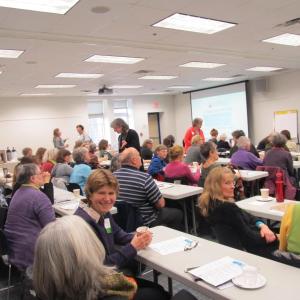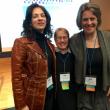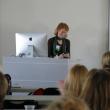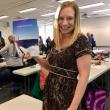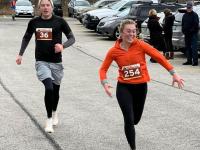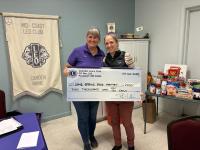Takeaways from Artists and Makers Conference
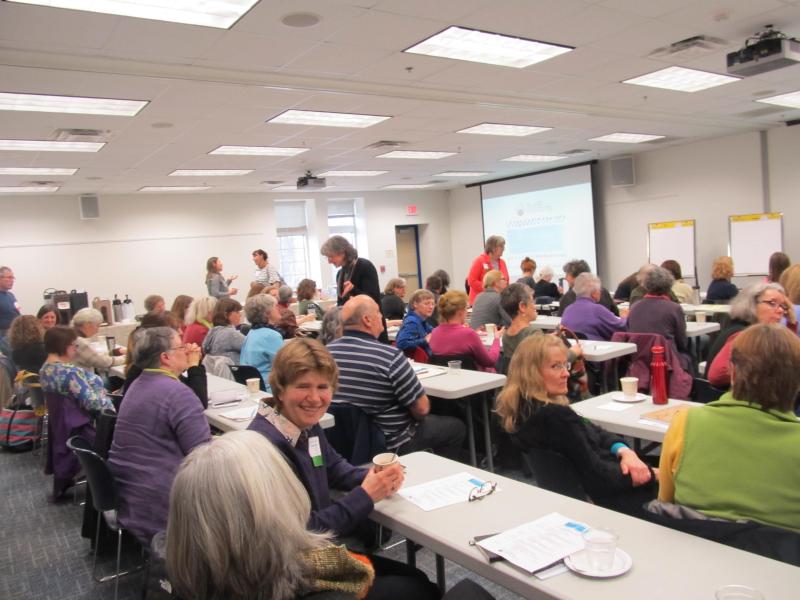 Nearly 150 people from all over the state came to the Artists and Makers Conference held at the Hutchinson Center in Belfast. (Photo by Kay Stephens)
Nearly 150 people from all over the state came to the Artists and Makers Conference held at the Hutchinson Center in Belfast. (Photo by Kay Stephens) Julie Horn, Maine Arts Commission; Anne Emlein, fiber artist and 2016 Craft Apprentice Program Master; and Maggie Bokor, jeweler and coach (“Sharing Stories, Stretching Ourselves”)
Julie Horn, Maine Arts Commission; Anne Emlein, fiber artist and 2016 Craft Apprentice Program Master; and Maggie Bokor, jeweler and coach (“Sharing Stories, Stretching Ourselves”) Photographer Michael O’Neil offered a special DIY Tabletop Photography workshop
Photographer Michael O’Neil offered a special DIY Tabletop Photography workshop PK presenter Maureen Egan
PK presenter Maureen Egan Abbie McGilvery, From the Nest (“Creating a Social Media Scrapbook”)
Abbie McGilvery, From the Nest (“Creating a Social Media Scrapbook”) Nearly 150 people from all over the state came to the Artists and Makers Conference held at the Hutchinson Center in Belfast. (Photo by Kay Stephens)
Nearly 150 people from all over the state came to the Artists and Makers Conference held at the Hutchinson Center in Belfast. (Photo by Kay Stephens) Julie Horn, Maine Arts Commission; Anne Emlein, fiber artist and 2016 Craft Apprentice Program Master; and Maggie Bokor, jeweler and coach (“Sharing Stories, Stretching Ourselves”)
Julie Horn, Maine Arts Commission; Anne Emlein, fiber artist and 2016 Craft Apprentice Program Master; and Maggie Bokor, jeweler and coach (“Sharing Stories, Stretching Ourselves”) Photographer Michael O’Neil offered a special DIY Tabletop Photography workshop
Photographer Michael O’Neil offered a special DIY Tabletop Photography workshop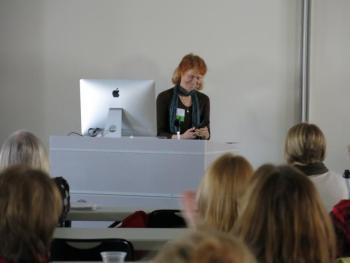 PK presenter Maureen Egan
PK presenter Maureen Egan Abbie McGilvery, From the Nest (“Creating a Social Media Scrapbook”)
Abbie McGilvery, From the Nest (“Creating a Social Media Scrapbook”)The Midcoast has a thriving artist and maker culture, but apart from social media, there are very few events to bring them all together. In recent years, Archipelago, the Island Institute store and gallery, has fulfilled this need by organizing an annual Artists and Makers Conference held in April.
What initially started as a handful of people around a table has morphed into their fourth day-long conference with more than 150 participants. A quick poll revealed that nearly half of this conference’s participants drove more than an hour away to attend, which says a lot about how eager artists are to learn from one another and network.
The day was set up to offer three tracks: foundational (for those just starting a business) transformational (growing a business to the next level) and inspirational (maintaining fulfillment, passion, and inspiration) with a buffet of multiple breakout sessions to give artists and makers more tools to advance professionally. One person couldn’t attend everything, so I had to make a choice. Here are my takeaways from the conference:
Standing Out
As a writer, I’ve attended many writing conferences and know how difficult it is to make a first impression with agents and publishers. For artists and makers, it’s very similar. I attended the “Approaching Stores and Galleries” session, hosted by three panelists: Nire Cook (Maine Crafts Association), Dennis Gleason (Gleason Fine Art) and Meg Reilly (The Sail Locker).
The bottom line: Be respectful and polite in your first encounter with the owner or gallery staff. “You would not believe how many people come in and are impolite,” said Cook, who offered best practices in building a good business relationship with stores and galleries. Other tips: Make an appointment (don’t just drop by) to speak with the owner, particularly in the summertime, when everyone is monumentally busy; or better, email the owner first with a line sheet of your work and tell a short and sweet story about yourself to go with the work. Gleason also reiterated the importance of first impressions relating story of a tone deaf artist who emailed him a self-aggrandizing pitch. Striking a balance between being confident about your work and being humble seemed to be the biggest takeaway. “If they like you as a person, they are going to be enthusiastic about your product,” said Reilly.
The rest of the day built upon these tracks with multiple sessions such as “Best Practices for Shows and Fairs,” “Grants and Opportunities for Artists and Makers,” and “Sharing Stories, Stretching Ourselves” giving the audience the kind of fast-tracked feedback it might take an artist years to learn on his or her own. There were plenty of opportunities for artists to make connections as well as marketing insights and the value of the Maine brand.
Later in the afternoon, the participants all assembled in one room for a Pecha Kucha style event featuring various artists, sculptors and jewelry makers. Perhaps the most valuable part of the conference was the chance to put all of the day’s tips and techniques into practice with a DIY Tabletop photography workshop by photographer Michael O’Neil, and a chance to pitch one’s product or craft to retail experts and gallery owners and receive constructive feedback. Everybody that day walked away with a renewed sense of his or her strengths and a checklist of ideas for improvement.
Maine, (and the Midcoast, in particular) will never have a shortage of creatives with an entrepreneurial drive. If anything, a day like this underscores how much a permanent network is needed for artists and makers to get together on a regular basis to learn from one another.
Kay Stephens can be reached at news@penbaypilot.com
Event Date
Address
United States

